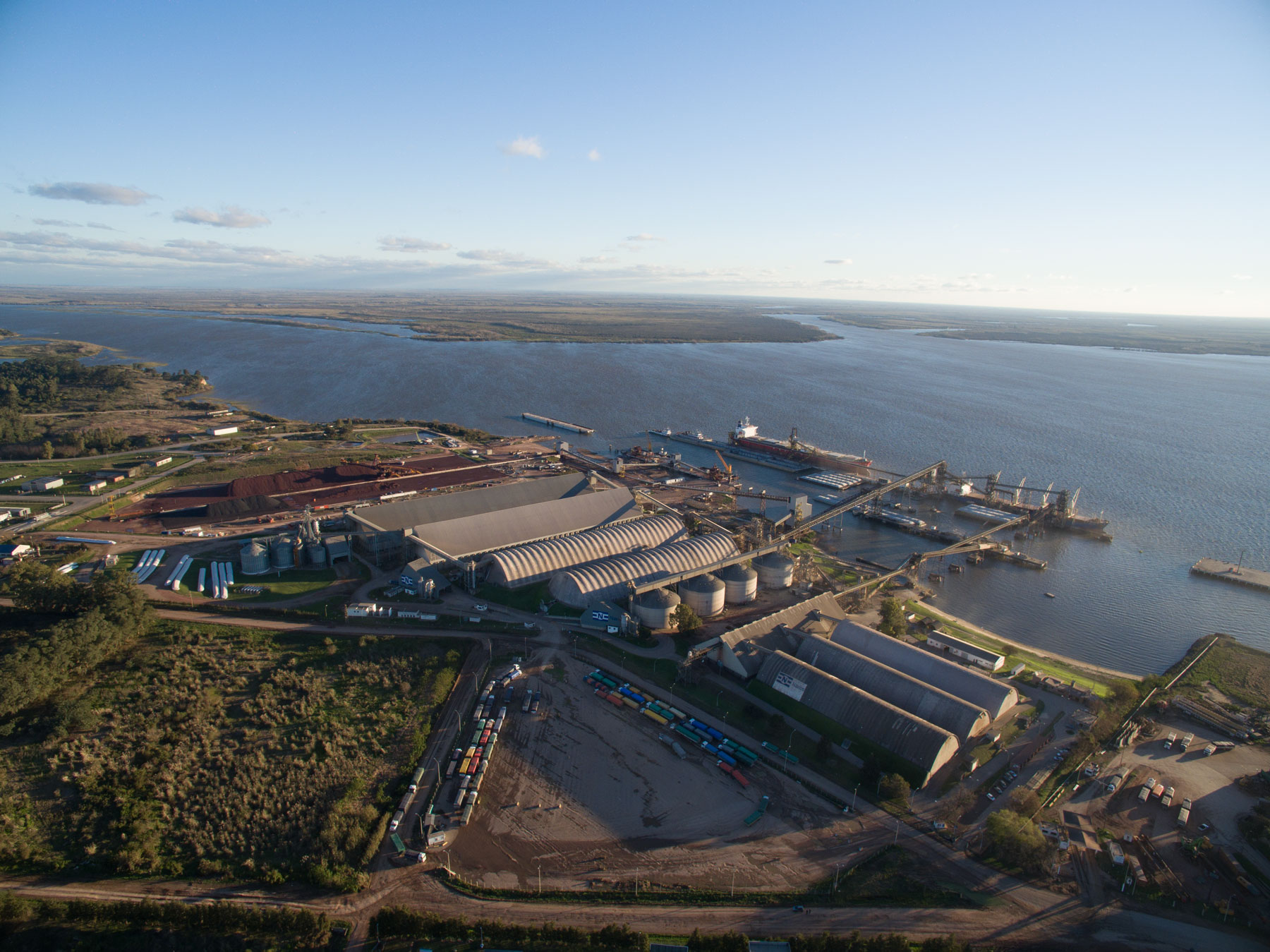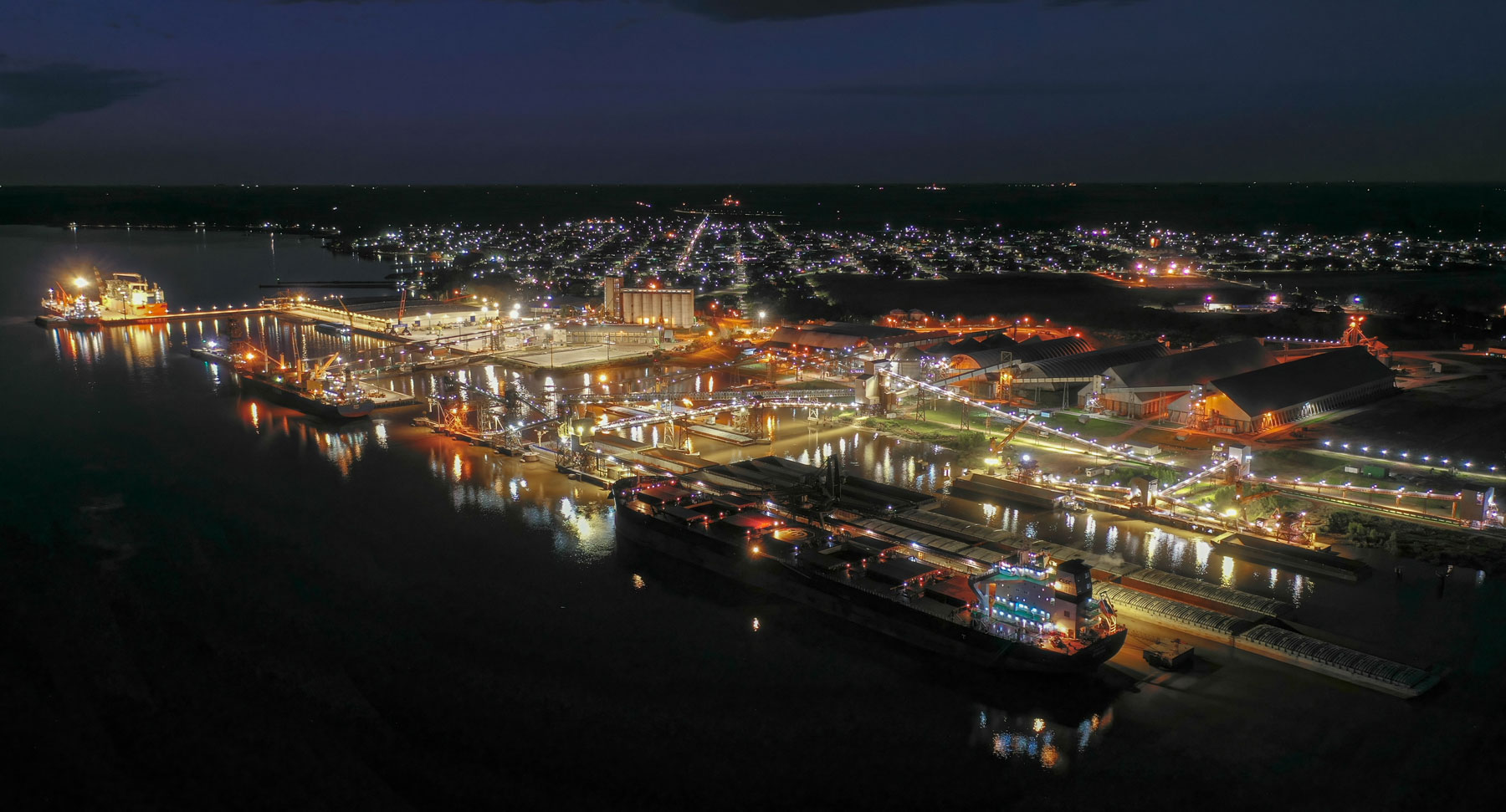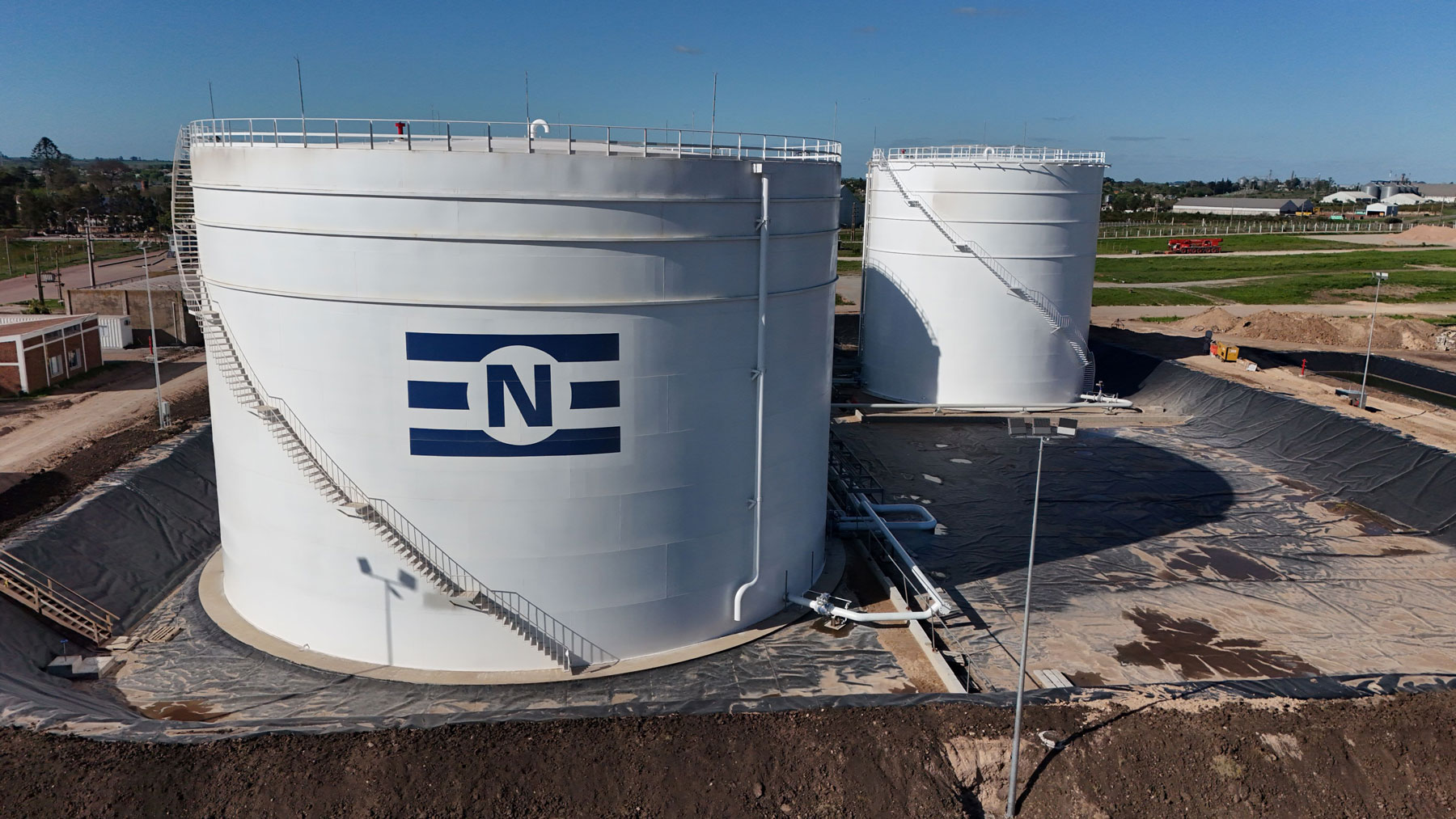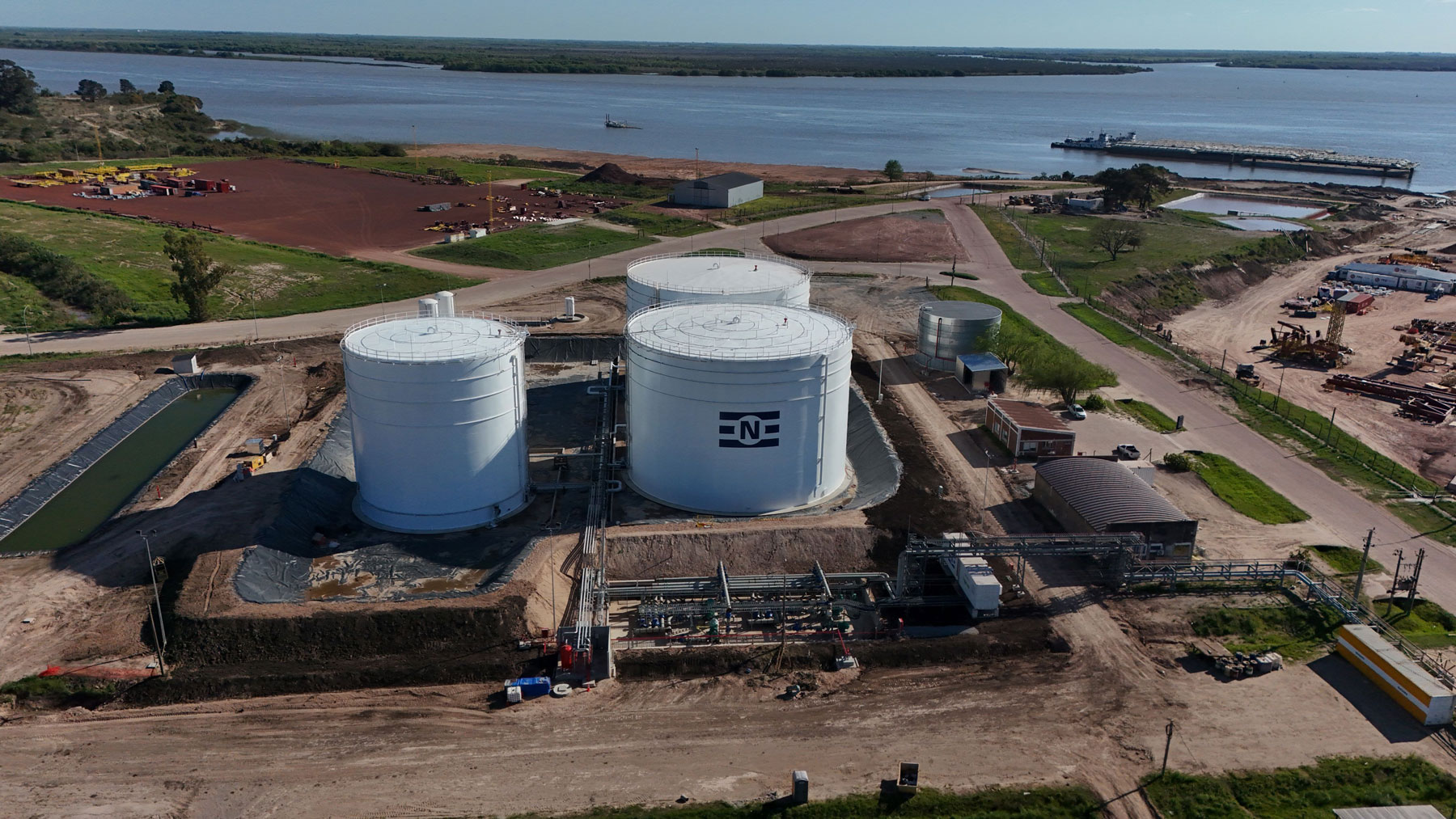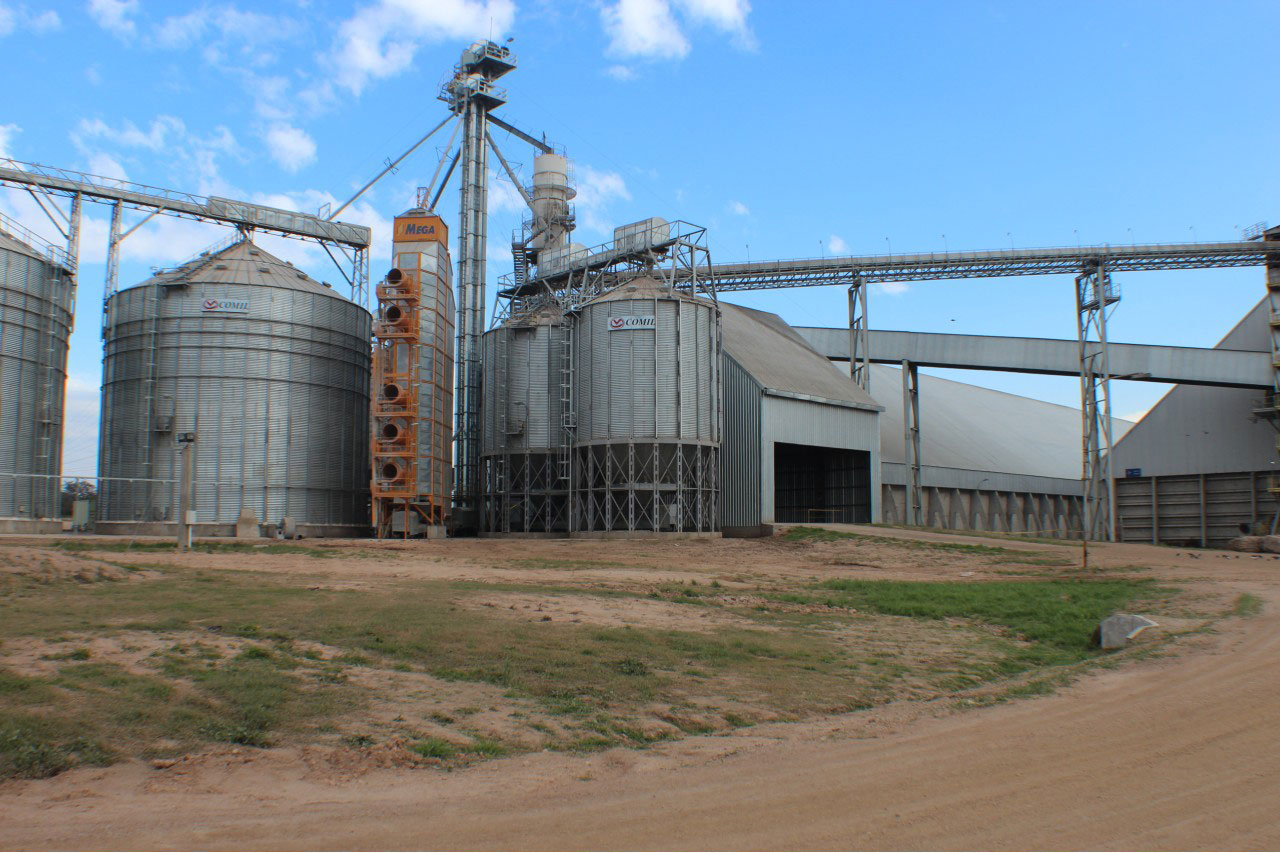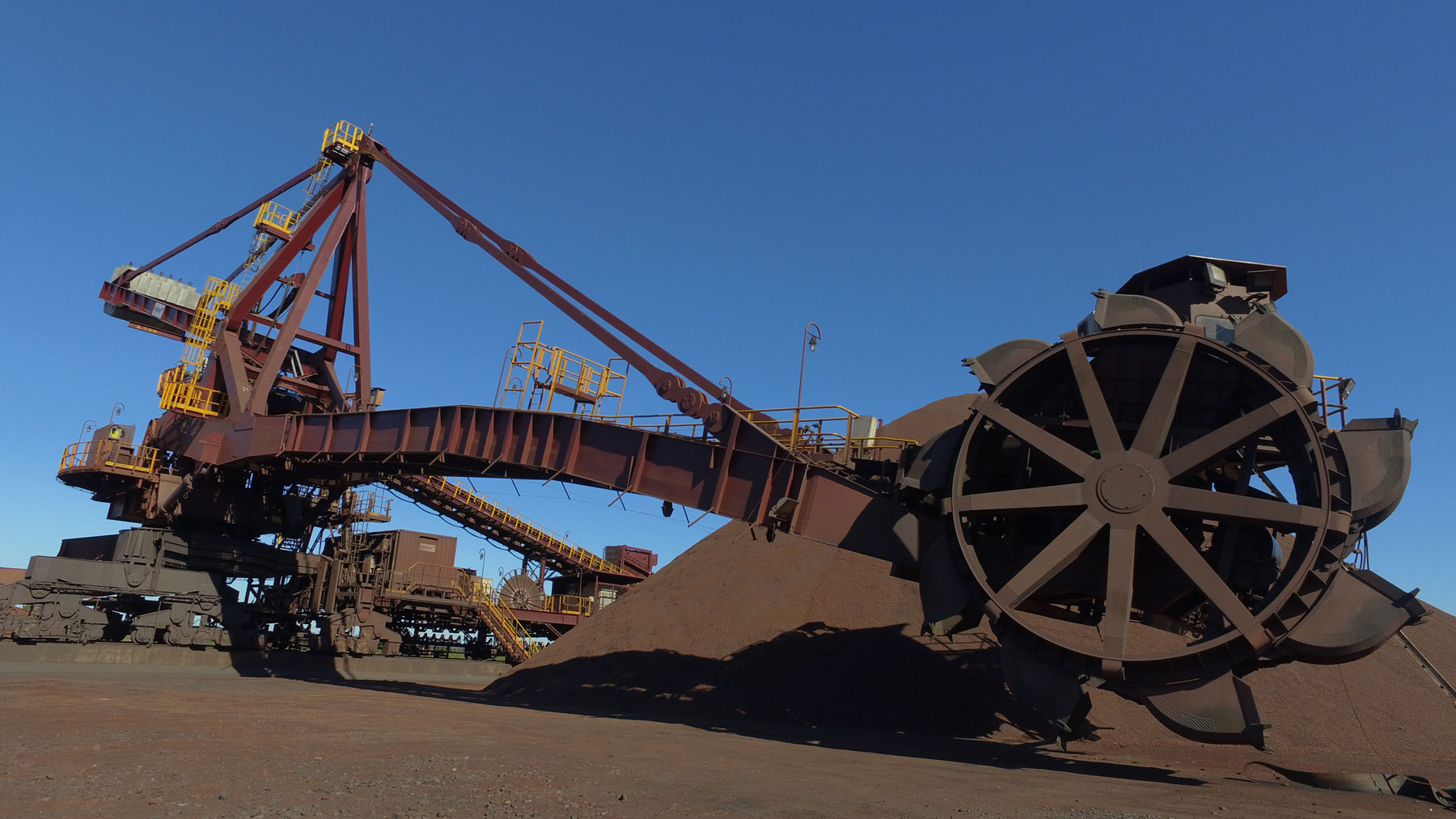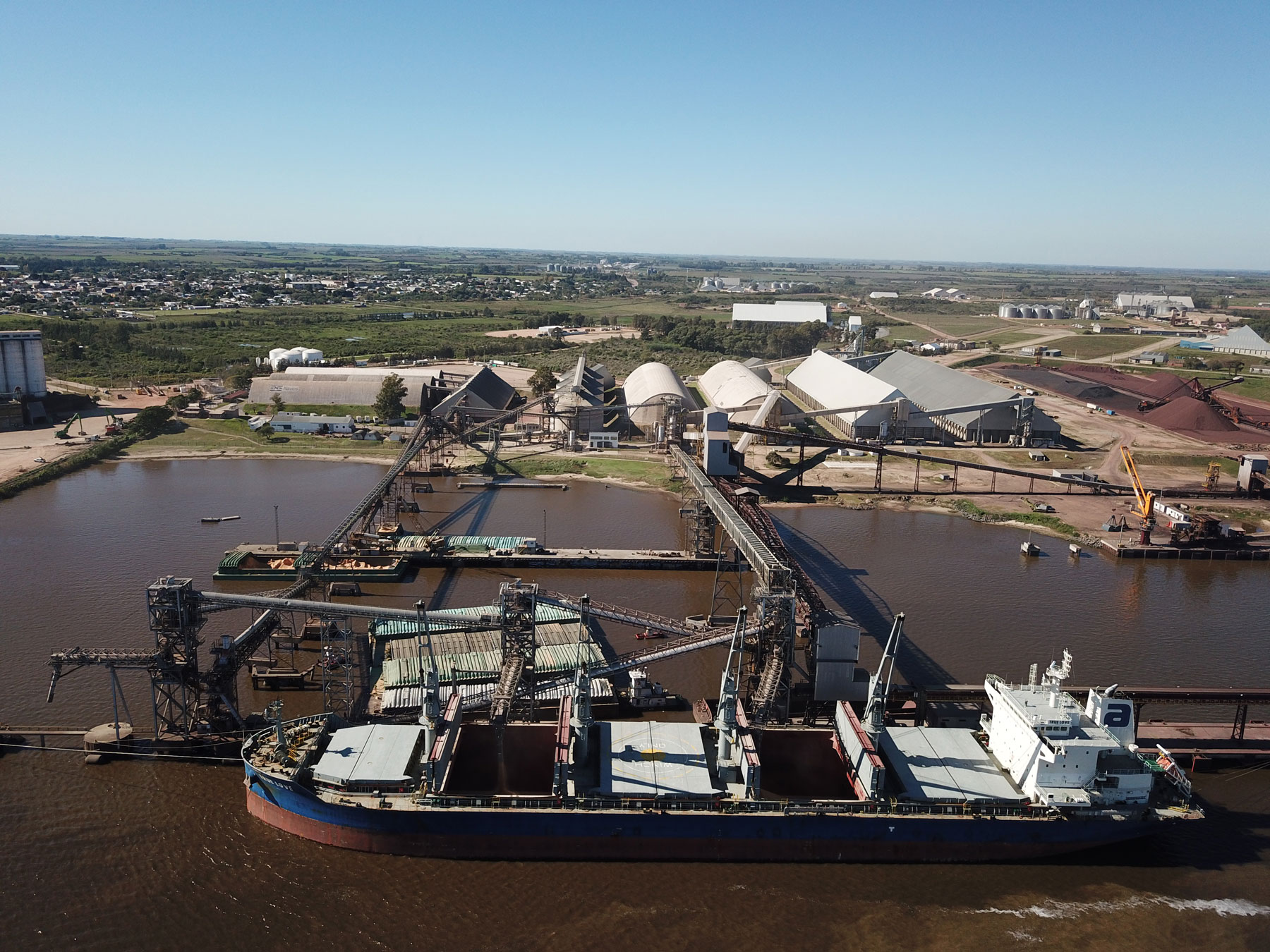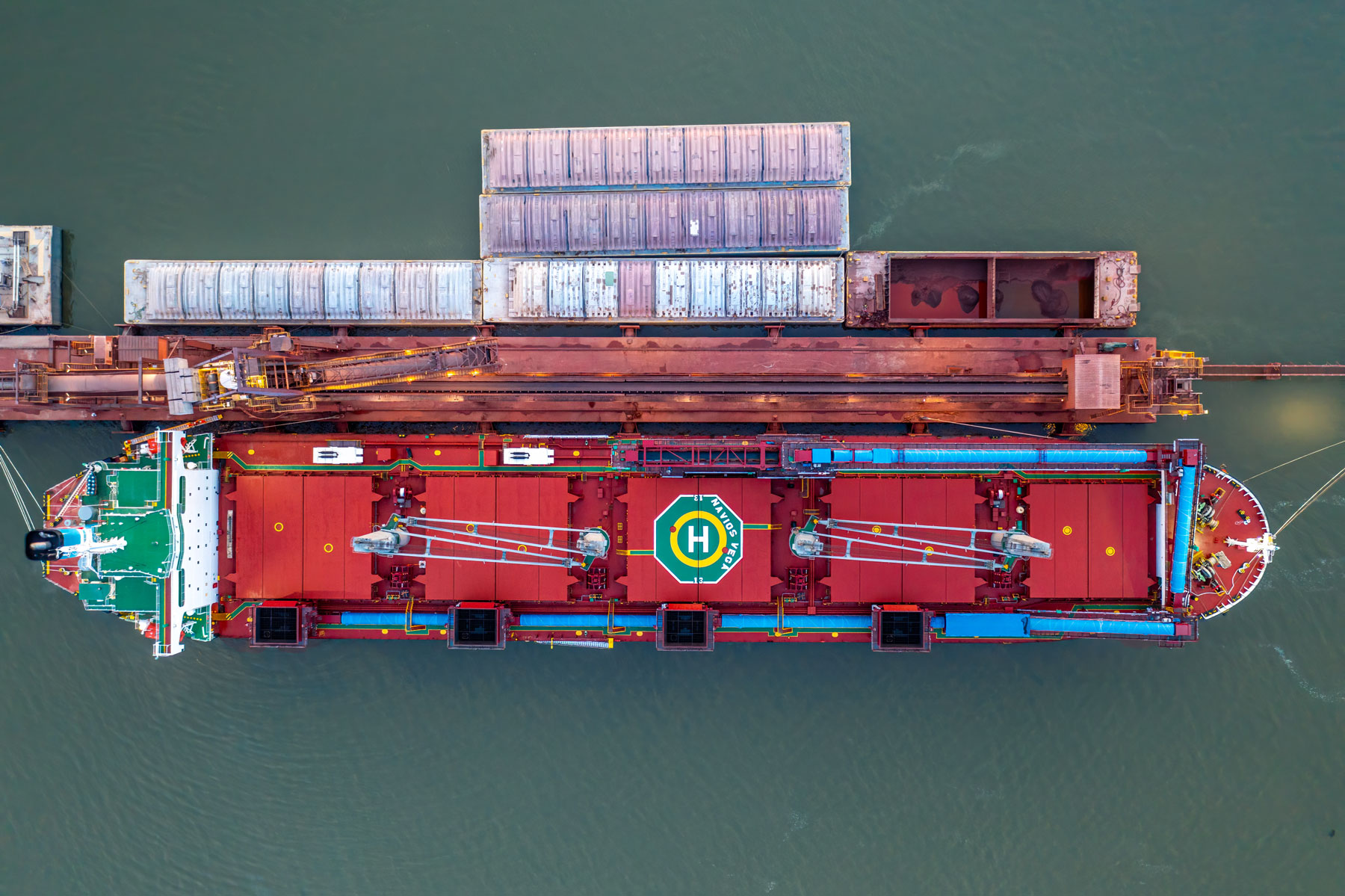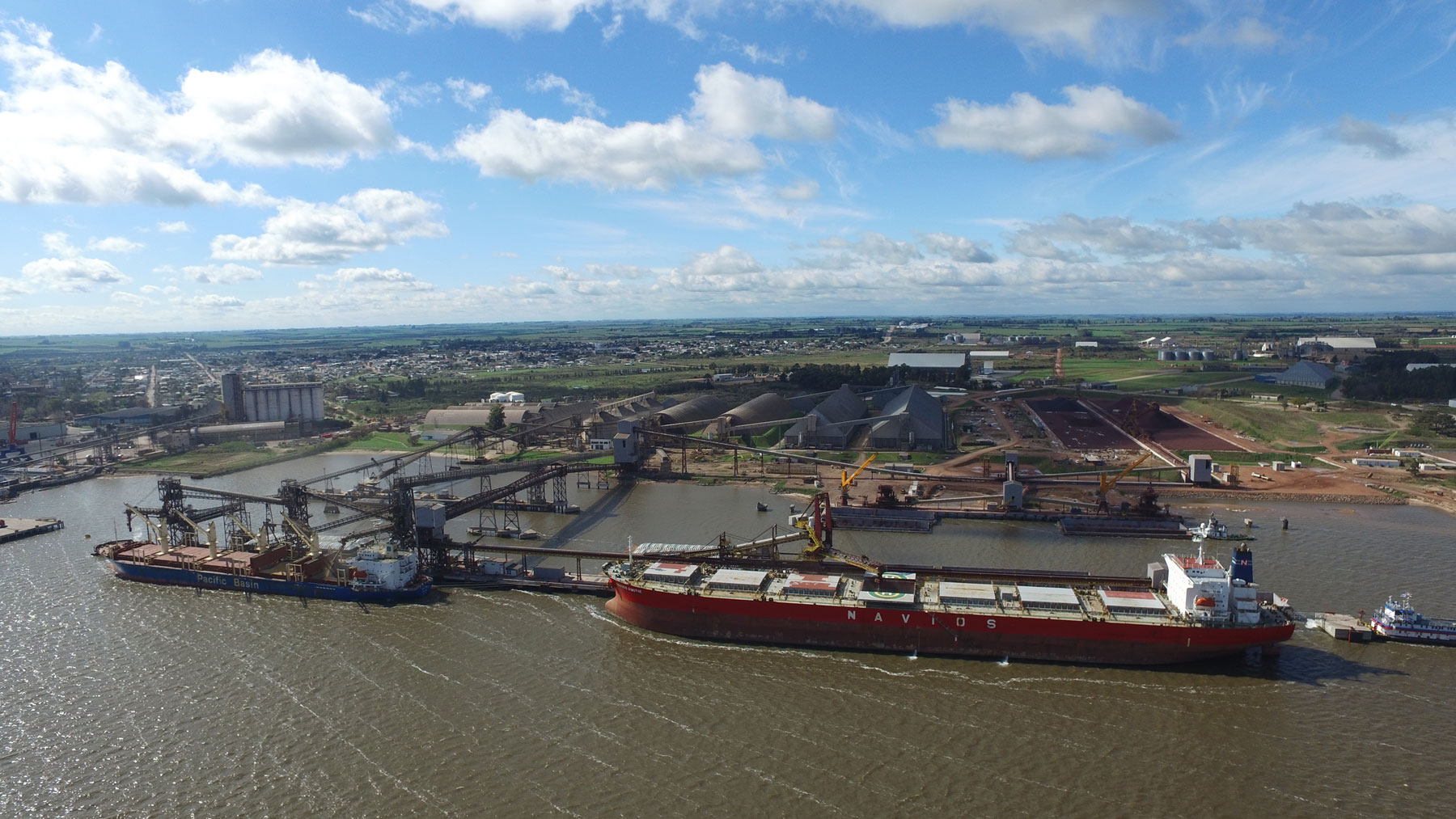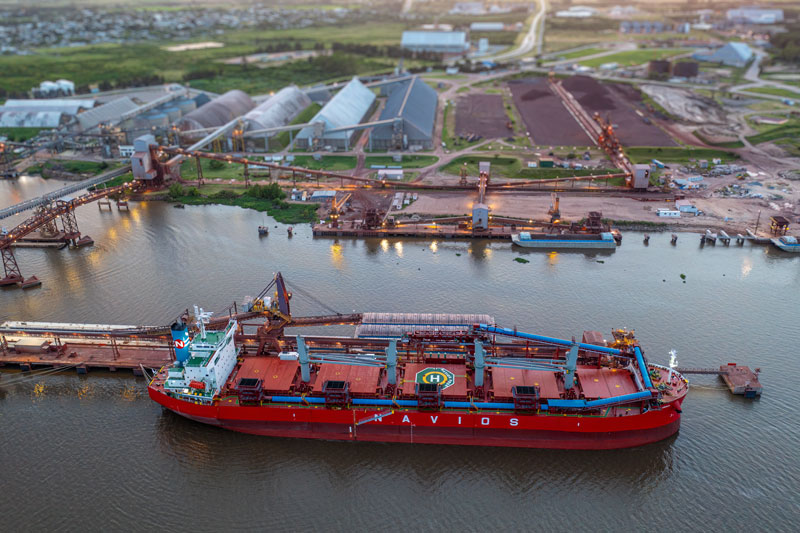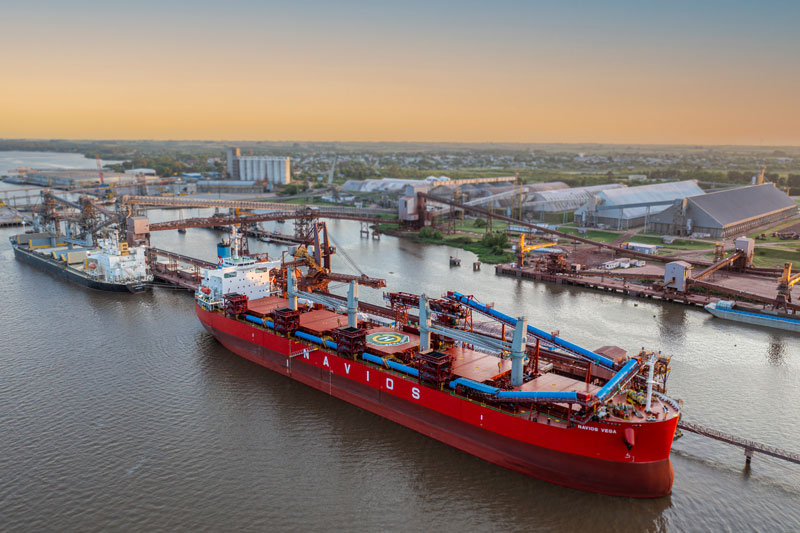Nueva Palmira Dry & Liquid Port Complex
Our Nueva Palmira facilities are strategically positioned within the Nueva Palmira Free Zone, ensuring that foreign commodities passing through are exempt from Uruguayan taxes.
We believe that the Dry Port Terminals we own and operate constitute the largest independent bulk transfer and storage port terminal complex in Uruguay based on throughput. Our Nueva Palmira complex comprises of a grain terminal, an iron ore terminal and a liquid cargo terminal.
Grain Terminal Operation
The commodities most frequently handled include grain and grain products, including cereals, soybeans, corn and wheat. Our Grain Terminal receives bulk cargoes from barges, trucks, and vessels, and either transfers them directly to dry bulk carriers or stores them in our modern silos for later shipment. The Grain Terminal operates 24 hours per day, seven days per week, to provide barge and ship traffic with safe and fast turnarounds. Multiple operations may be conducted simultaneously at the Grain Terminal, including cargoes from vessels, barges, trucks and grain silos. The Grain Terminal uses a fixed fee structure for customers.
Grain Terminal Infrastructure
The Grain Terminal is unique in the region because of its sophisticated design, efficiency and multimodal operations. Our Grain Terminal has specially designed storage, drying and conditioning facilities and two-belt conveying systems that provide significant flexibility in cargo movement aimed at avoiding delays to trucks, vessels and barge convoys. The Grain Terminal currently offers approximately 460,000 tons (soybean basis) of clean and secure grain silo capacity. With nine silos (some with internal separations) available for storage, our facility provides customers storage for their commodities separate from those of other customers and allows for identity preservation of customers’ products. The Grain Terminal has the latest generation, high precision, independent weigh scales for loading activity.
The Grain Terminal has two docks. The main outer dock is 240 meters long and accommodates vessels of up to 85,000 DWT loading to the maximum draft permitted for vessels at the Martin Garcia and Mitre Canals. The dock has three modern ship loaders that since the construction of the second conveyor line to the main pier are capable of loading vessels at rates of up to 48,000 tons per day, depending on the vessel, use of silos and on the type of commodity. The secondary inner dock is 170 meters long and is dedicated to the discharge of barge convoys, which is carried out on both sides of the dock. The Grain Terminal is capable of discharging barge convoys at rates averaging 10,000 to 14,000 tons per day, depending on the type of barges and commodity. There is also a fixed-duty cycle crane to discharge barge convoys. In addition, discharging at our facility is optimized through the use of commodity-appropriate bucket size and type.
Iron Ore Terminal Operation
The commodities most frequently handled include iron ore and manganese. Our Iron Ore Terminal receives minerals from barges and either transfers them directly to dry bulk carriers or stores them in our stockpiles for later shipment. The Iron Ore Terminal operates 24 hours per day, seven days per week, to provide barge and ship traffic with safe and fast turnarounds.
Iron Ore Terminal Infrastructure
The Iron Ore Terminal is unique in the region because of its sophisticated design, efficiency and multimodal operations. Our Iron Ore Terminal has specially designed storage facilities and conveying systems that provide significant flexibility in cargo movements aimed at avoiding delays to vessels and barge convoys. On shore the new facilities comprise an area of approximately 20 acres with two stockpiles for mineral with a storage capacity of up to 1.3m tons. This allows us to keep separate cargo piles for each customer. Minerals at the stockpile are handled by a Stacker/Reclaimer. Auxiliary equipment for barge mooring, power, environment control and water treatment are also part of the iron ore terminal facility.
The Iron Ore Terminal has two docks. The main outer dock is 300 meters long with two berths for vessels able to accommodate vessels on both sides; up to 150,000 DWT on the outer side, and up to 85,000 DWT on the inner side, loading to the maximum draft permitted for vessels at the Martin Garcia and Mitre Canals. The secondary inner dock is 270 meters long and is dedicated for the discharge of barge convoys, able to accommodate and discharge three barges at the same time. Vessels are loaded with a travelling shiploader and barges are unloaded by three cranes.
Liquid Terminal Operation
We own a port terminal with tank storage for liquid cargoes, such as vegetable oils, biofuels and others, and provision of fuel products within Nueva Palmira Free Zone for bunkering operations. The Liquid Port is located in Nueva Palmira, Uruguay, at kilometer zero of the Parana-Paraguay riverway, at the confluence of Parana & Uruguay rivers.
The strategic location of the terminal at the mouth of the Hidrovia Waterway has comparative advantages for the facilitation of international trade exports as well as imports. The Liquid Port was built to carry out operations efficiently, including the loading and unloading of barges, ships and storing in tanks.
The liquid port terminal provides short and long-term storage and transshipment services for liquid cargo, as well as the sale of liquid products.
Liquid Port Terminal Infrastructure
The liquid port terminal currently has three tanks with a static storage capacity of 37,000 cubic meters. The tank plates are carbon steel, as specified by the American Standard for Testing Materials, and are epoxy-coated to manage the target cargoes. Cargo circulation systems are installed in the tanks to prevent sedimentation and maintain cargo quality. Construction was performed according to the standards of the American Petroleum Institute. There are two cargo operations manifolds, one for vessels at the ocean pier and one for barges in the liquid barge pier. We have available space at the terminal to increase static storage capacity up to 140,000 cubic meters to meet our customers’ future demand.

